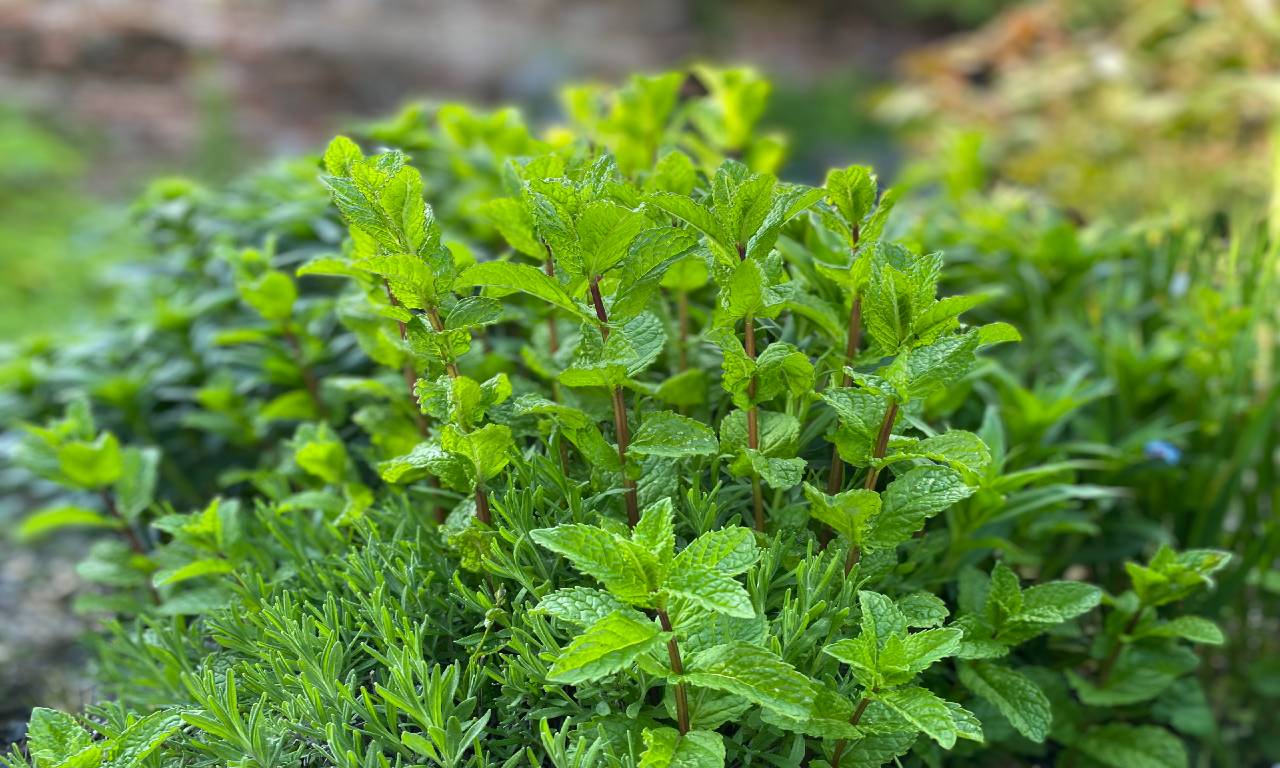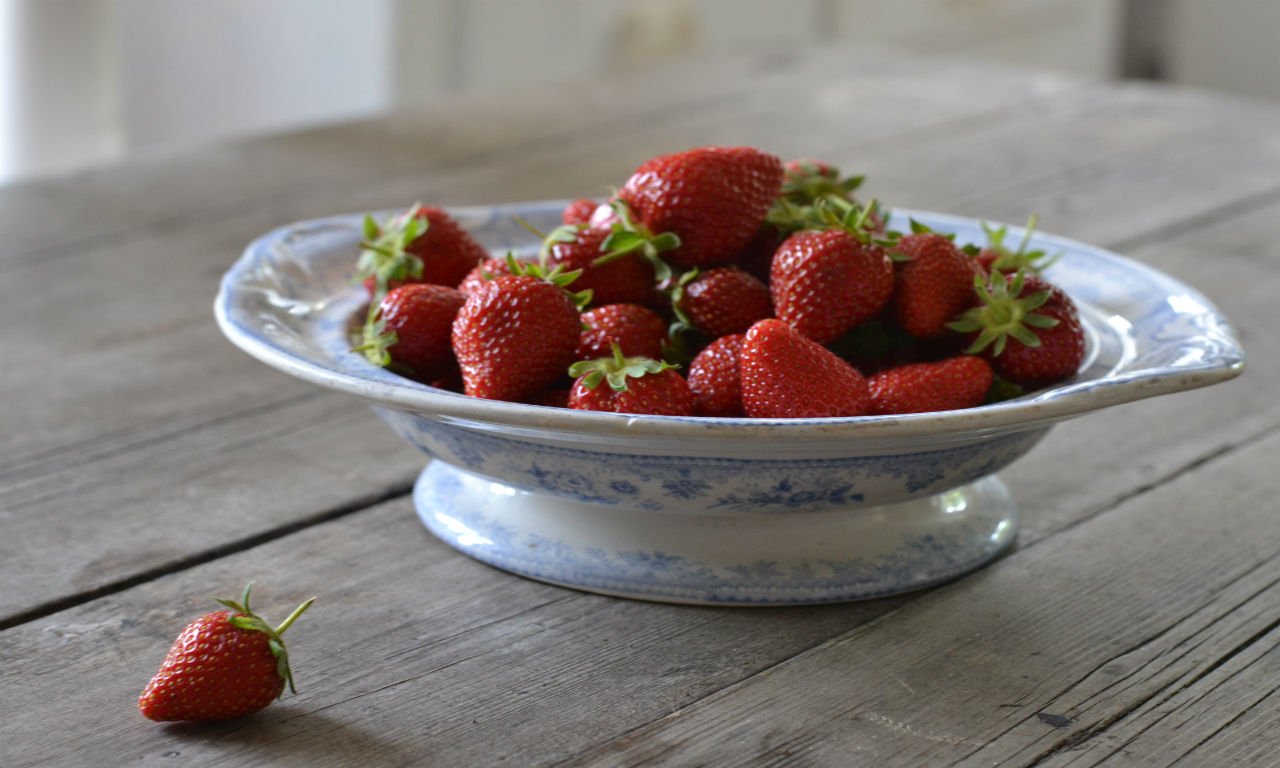Culinary and medicinal mint is thought to have been growing in Britain since Roman times. Loved for its antiseptic and anti-bacterial properties, it is a familiar sight in most herb gardens. Mint is very easy to grow and perfect to add a finishing touch for so many of your favourite late Spring and early Summer recipes.
Use freshly picked leaves with abundance in the kitchen and also try drying aromatic stems to store in an air tight jar during the winter.
Take cuttings which can be easily grown from a few stems.
Remove the larger leaves at the base of the stem and pinch out the tiny leaves at the top, ideally have no more than two pairs of leaves.
Place the bare stem in a clean jam jar filled with water and leave on a sunny windowsill. Usually roots will start to appear within 7 days.
Transfer to a pot filled with compost and water well. Continue to grow on the windowsill until the plant becomes established and then acclimatise to the outside. Re-pot to a larger container and feed regularly during the summer.

Nurture a ready grown pot of herbs.
If you don’t already have a plant growing in your garden, another alternative would be to buy a pot from the supermarket. Harvest the leaves for your recipe and keep them fresh in a jug of cold water. Meanwhile transfer the roots (which may need dividing) to another larger container filled with compost. Water well and don’t let the compost dry out whilst the plant re-establishes.
Care of mint.
March-May: Split plants if they are showing signs of becoming over crowded. Avoid planting different varieties beside one another as they will cross-germinate and their individual mint aroma will be lost.
June-August: Cut back the spring growth to encourage fresh leaves for the remainder of the growing season. Mint is highly invasive so you will need to keep it under control or grow in a pot to restrict the roots.
During the growing season and before the flowers appear, harvest fresh stems to dry in an airing cupboard or above the AGA for the winter.
September-November: Early autumn dig up a root and re-pot in compost and place in the greenhouse to force the growth and encourage the plant to continue into the colder months and to re-appear in early spring.
December-February: Water forced mint sparingly.
Companion planting.
Place a pot of spearmint or peppermint beside your favourite roses and this will help to to deter aphids.

Cooking with mint…
Mint jelly.
Roughly chop 900 g freshly washed Bramley apples. Remove any bruised parts and discard. Place the apple (including core and pips) into a large pan with 600 ml water. Bring to boiling point and then reduce to a simmer or transfer to AGA simmering oven until the apple is soft and pulpy. Strain the cooled pulp through a jelly bag or clean tea towel. If you rush this stage and push the pulp through the final result will be a cloudy jelly. Measure the juice and weigh 450 g granulated cane sugar to every 600 ml liquid. Sterilise 6 small preserving jars and place in the oven to warm through. Pour the liquid into a large stock pot or preserving pan and place over a gentle heat. Add the sugar (warmed in the simmering oven ideally) and slowly add this to the warm liquid, stirring all the time until the sugar is completely dissolved. Bring to the boil and add 3 tablespoons cider vinegar then increase the heat and boil rapidly to reach setting point. Let the jelly rest for five minutes and remove any impurities from the surface with a slotted spoon then stir in 3 tablespoons chopped mint from your garden. Stir gently, pour into warmed preserve jars, seal with new lids and label when cold. Read our tips on preserving here.
Mint sauce.
Strip the leaves from a small bunch of mint and finely chop with a dessertspoon of granulated sugar with four tablespoons of cider vinegar and a little spring water to taste. Serve with roast lamb.
Mint tea.
Gather a bunch of your favourite garden, Moroccan or spearmint and infuse in freshly boiled water 3-4 minutes for a refreshing tisane.
Mint partners really well with …..
Nectarines, mozzarella and Parma ham.
Strawberries and meringues.
Peaches and cream.
Dark chocolate.
Lamb and new season potatoes – of course!
Peas, broad beans and feta.
Natural yoghurt, and soured cream.
Lemon and elderflower.
Don’t forget …
Borage, cucumber and Pimms with ginger ale.

